Diegetic interfaces in Gravity Rush
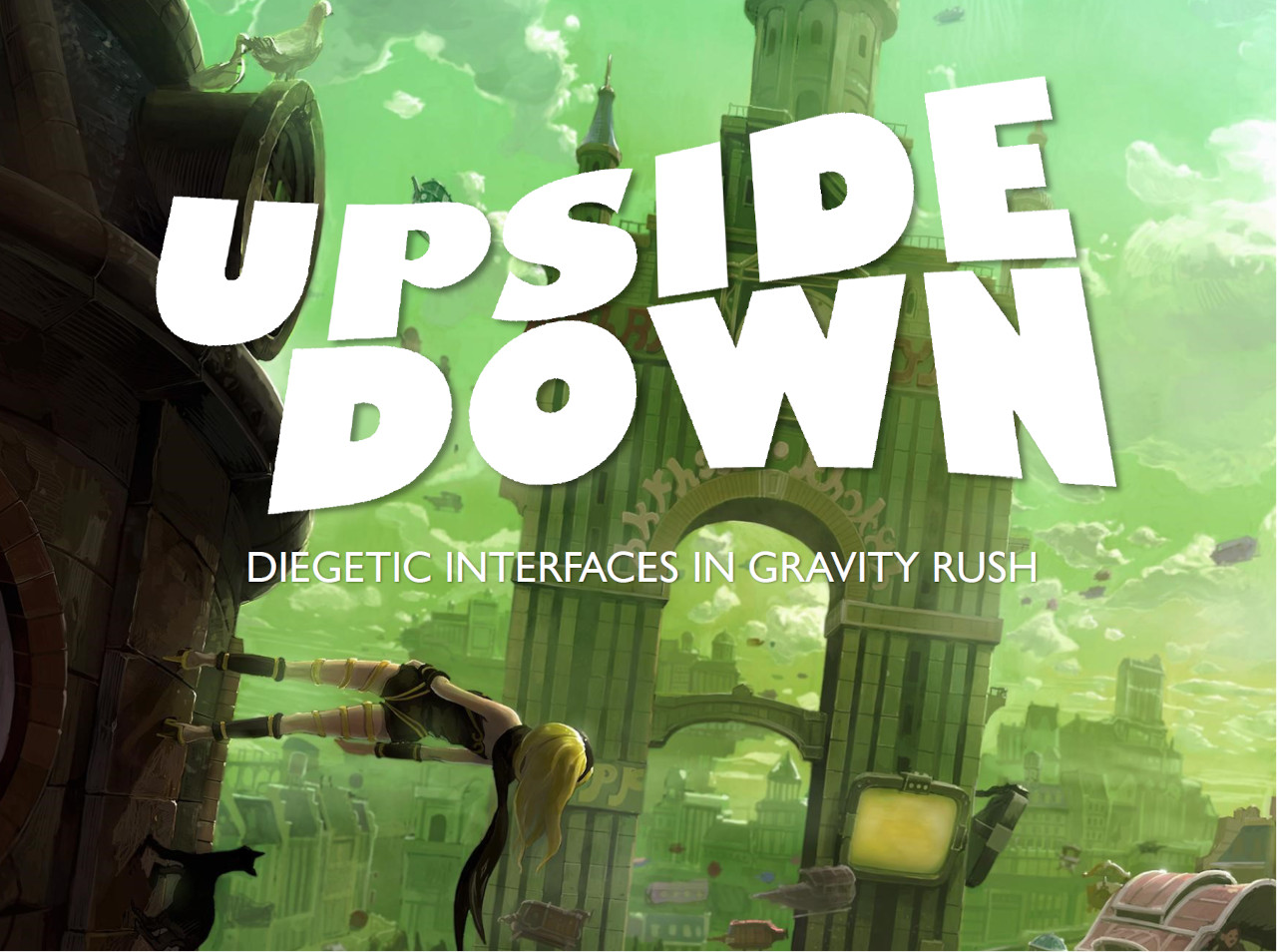
Introduction
User interfaces (UI) play a vital role in software development as they facilitate interaction between the user and the machine. In game development, these interfaces are paramount, as interaction is the primary differentiator between games and other forms of media. Given the audiovisual nature of video games, UI manifests in many forms, extending well beyond the widely recognized HUD. In their master’s thesis, Fagerholt and Lorentzon (2009) introduced a classification system that distinguishes UI elements based on whether they exist within the fictional or spatial game world, and that has since become the industry standard and continues influencing game development.
This essay seeks to address the question of whether diegetic elements, as the pinnacle of immersion, inherently enhance usability and accessibility in games. To that end, the text uses the earlier classification to analyze a game and endeavor to convert non-diegetic elements into diegetic ones.
Before delving into the analysis, it is essential to acknowledge that locating a game featuring a variety of UI types that could benefit from the transition to diegetic elements posed a formidable challenge. Not all game genres, styles, or themes readily accommodate diegetic interfaces. Games emphasizing contextual information, such as RPG and strategy games, or those characterized by fast-paced, chaotic action scenes, often rely on HUDs to prevent visual clutter. Conversely, games prioritizing immersion, such as first-person and third-person games, including VR experiences, tend to reap more benefits from diegetic elements. While a futuristic simulator like WipEout might have seemed the obvious choice due to its typical implementation of diegesis, the final decision was to explore a different path: Gravity Rush.
PDF version
Gravity what?
Gravity Rush is an action-adventure game placing players in the shoes of Kat, an amnesiac young girl gifted with the extraordinary power to manipulate gravity, thanks to a mysterious cat. Her journey commences in a city suspended around a colossal pillar, under constant threat from enigmatic creatures known as Nevi, and slowly succumbing to spatial rifts. With the help of newfound allies and others who share her unique abilities, Kat must embark on a quest to save the city while uncovering the secrets of her past.
Figure 1. Kat in the city. From YouTube.

Beyond the stunning aesthetics of the environments, characters, and comic-like cutscenes, Gravity Rush offers a variety of mechanics that make the experience unique. Players can use motion controls to launch Kat in any direction, allowing her to explore an open-world setting, defy gravity on vertical and upside-down surfaces, and interact with various objects. Kat’s melee abilities complement her gravity powers, making her a mighty warrior. The game also features power-ups, skills, and quests to enhance gameplay.
Figure 2. Kat flying. From Mediavida.

Developed by Team Gravity, a division of Japan Studio, and initially published by Sony Computer Entertainment for the PlayStation Vita in 2012, Gravity Rush received a remastered version for the PlayStation 4 in 2015, which serves as the basis for this analysis.
To be or not to be (diegetic)
As mentioned in the introduction, this essay aims to assess the feasibility of incorporating diegetic elements into the game’s user interface, guided by Fagerholt and Lorentzon’s (2009) interface classification. The text will specifically examine the UI elements within the active game screen to narrow the focus.
Figure 3. A screen showing the non-diegetic elements of the UI, including a progress indicator and a timer.
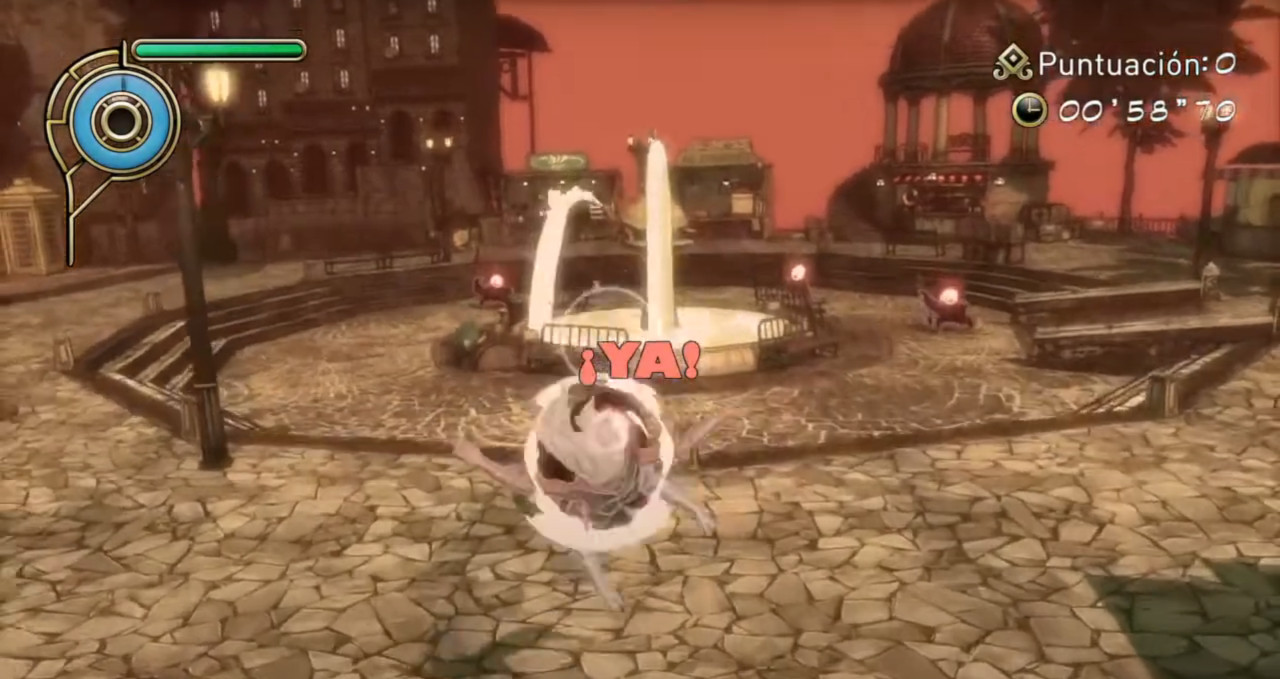
The game’s most traditional UI, the non-diegetic type (non-fictional and non-spatial), features a minimalistic HUD primarily containing health and energy bars, along with an aesthetic ornament positioned in the top left corner. The HUD also displays subtitles during in-game dialogues at the bottom of the screen, and new mission objectives are announced in the center. Some quests incorporate a progress indicator, a timer, or both in the top-right corner.
Figure 4. A screen showing the spatial elements of the UI, including a quest starting point and the destination marker.
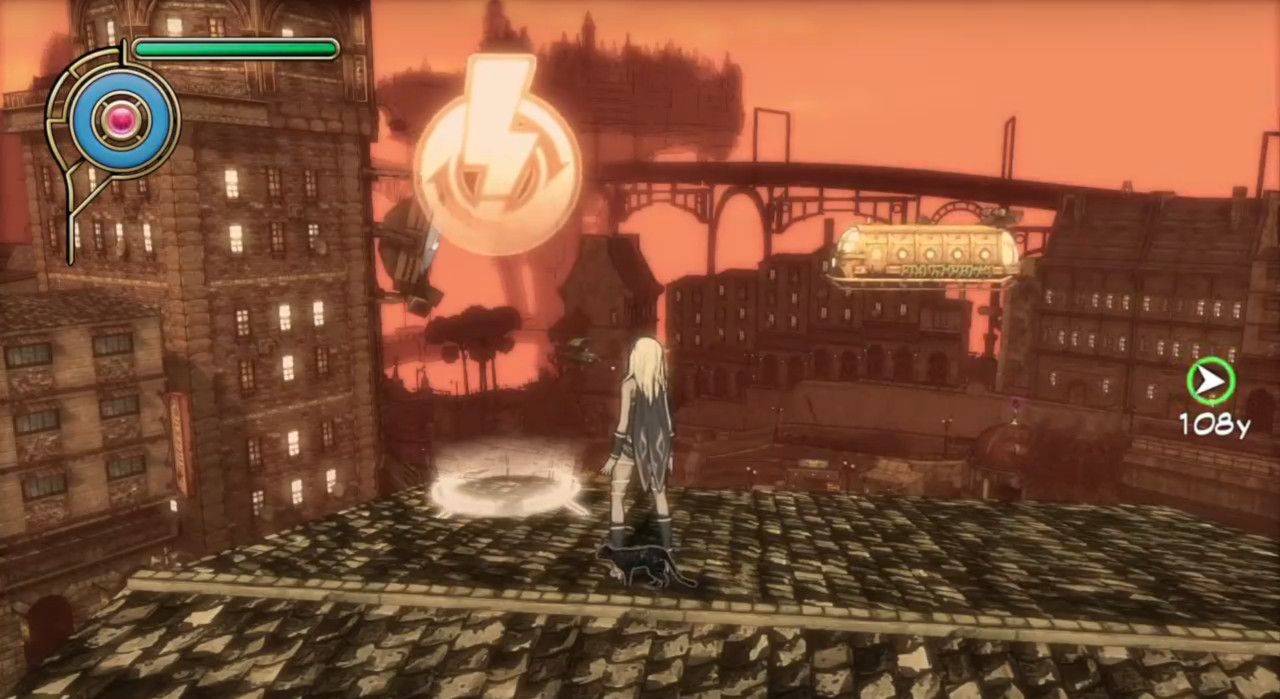
The spatial type (non-fictional and spatial) plays a prominent role in the game. Quest destination markers, interactable items, NPCs, and enemy targets are all visible within the game world but remain external to the game’s fiction, meaning they are only visible to the player and not to Kat. Additionally, points of interest, like manhole-based fast travel locations and quests initiated independently of NPCs, are displayed in the spatial realm with colorful, visible indicators.
Conversely, the game employs relatively few meta-type elements (fictional and non-spatial). One example is the onscreen wind effect, visible when launching Kat in any direction to convey a sense of speed. However, it is arguable that this element falls within the diegetic space, as it is likely something Kat would also perceive when (gravity-)rushing.
Figure 5. A screen showing the meta elements of the UI, including the wind gush that appears when gravity-rushing.
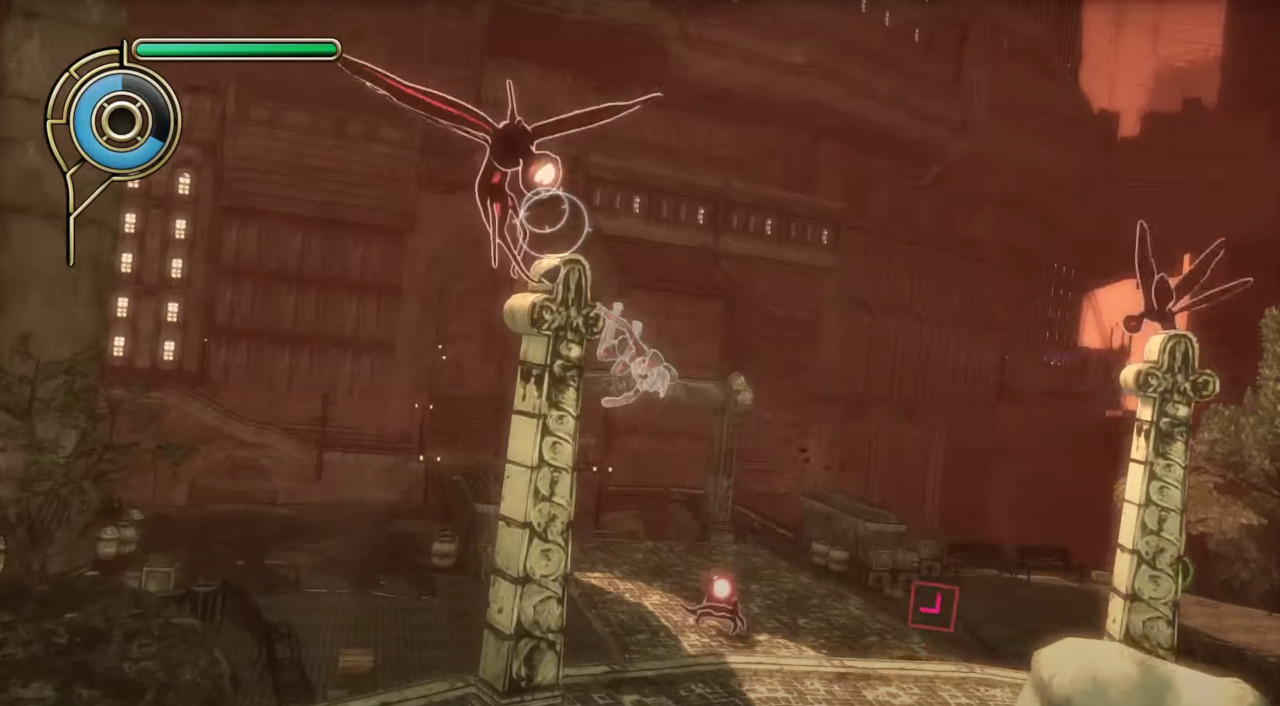
As for the diegetic type (fictional and spatial), the game presents relatively few notable elements, leaving room for potential additions. Some aspects mentioned earlier, such as the wind effect during high-speed flight, blur the lines between spatial and diegetic elements. For instance, enemy targets, while marked by spatial indicators, also possess diegetic features, as they are represented by prominent, bright spheres indicating weak spots. Additionally, the gravity storms enveloping the city in all directions, including the abyss at the pillar’s base, serve as a diegetic element, providing an in-game explanation for the game’s level boundaries within its fictional world.
Considering these elements, the following sections will explore opportunities for enhancement by converting certain existing non-diegetic, meta, or spatial elements into diegetic ones. These proposals will be illustrated using Folmer’s (2007) interaction design patterns.
Diegetic proposals 1 & 2: My Life for a Cape / Rainbow Skin
| Problem | The health and energy bars are too far from the action.
|
| Context | Minimalistic or HUD-less interfaces tend to minimize elements outside the spatial world to help players maintain focus on the action. Overlooking critical information or losing the game because of HUD distractions can lead to frustration. |
| Forces |
|
There are a two possible solutions:
|
|
| Why | Utilizing Kat’s physical attributes or visible equipment can preserve onscreen character information while minimizing distractions from the action. This is especially important for players with hearing disabilities who rely less on auditory cues. Additionally, like most diegetic UI elements, this enhances the game’s aesthetic dimension. |
| Examples | Numerous games implement diegetic UI elements that utilize character attributes or clothing to convey information. Notable examples include Mario’s size changes and the main character in «Ghouls ‘n Ghosts» losing armor upon getting hit. A similar approach can be observed in «Alto’s Adventure,» where the character’s scarf length represents the amount of energy. |
Diegetic proposal 3: Not-so-human markers
| Problem | Quest starting markers are light indicators unrelated to the story.
|
| Context | In most narrative-driven games, quests are typically initiated by NPCs or elements connected to the story. Failing to maintain consistency in this regard may lead to reduced immersion. |
| Forces |
|
| Solution | The solution is straightforward: employ NPCs or other story-related elements as the starting points for all quests, including time-attack missions. |
| Why | Maintaining consistency is crucial, not only concerning mechanics but also within the game’s fictional world. This approach sustains player immersion and assists users with cognitive disabilities in recognizing game elements. |
| Examples | Notably, the game’s sequel features NPCs as quest starting points, demonstrating the feasibility of this approach. |
Diegetic proposal 4: Jet Set Gravity
| Problem | Announcements appear in the center of the screen.
|
| Context | Traditional game announcements often intrude on the HUD, containing loading messages, location names, and current events. These messages typically convey vital information that developers want players to receive, so they occupy the screen area where the action unfolds and are notably prominent. |
| Forces |
|
| Solution | One potential solution involves integrating these messages into the game’s narrative, centering the action on them when displayed. This can be achieved by incorporating messages into the city’s environment, resembling ghostly memories only visible to Kat or provided by Gade. Alternatively, they could be introduced as graffiti, particularly when visiting a location and the UI announces its name. |
| Why | Incorporating important announcements into the game’s fictional world and storyline by displaying them within the environment prevents players from losing focus on the action and enhances the game’s aesthetic dimension. |
| Examples | Many games integrate significant announcements into their fictional world, addressing them to the character (and indirectly to the player). For instance, «Abe’s Oddysee» featured announcements on monitors scattered throughout the game’s fictional world, although directed at the player, not Abe. In a more recent example, «Deathloop» includes messages on the walls as mementos from previous iterations of the loop aimed at the main character. |
Conclusions
Not all games incorporate diegetic elements into their UI despite their substantial contributions to immersion and player engagement. The mere fact that diegetic elements enhance the aesthetic dimension should incentivize developers to include them, particularly when they can enhance usability and accessibility.
Nevertheless, it is crucial to avoid adding diegetic elements simply for the sake of having them, as their suitability varies across genres, styles, and themes. Integrating diegetic elements into a minimalistic UI in a game prioritizing immersion is a favorable choice. However, in games where users require quick access to abundant information, cluttering the spatial realm with diegetic elements may prove counterproductive.
References
Andres, M. (2010, February 23). Game UI Discoveries: What Players Want. Game Developer. https://www.gamedeveloper.com/design/game-ui-discoveries-what-players-want
Burnett, J. (2021, December 5). 7 Obvious Beginner Mistakes in your Video Game HUD. The Wingless. https://thewingless.com/index.php/2021/05/12/7-obvious-beginner-mistakes-in-your-video-games-hud-from-a-ui-ux-art-director/
F. J. (2019, March 7). What Are Your UI Choices. Medium. https://medium.com/@gfruity/what-are-your-ui-choices-834ea7d937c
Fagerholt, E., & Lorentzon, M. (2009). Beyond the HUD – User Interfaces for Increased Player Immersion in FPS Games [Master Thesis, Chalmers University of Technology]. https://odr.chalmers.se/items/d5fe6889-4cc6-49c2-ba56-0d759e2f37eb
Gravity Rush. (n.d.). Game UI Database. https://www.gameuidatabase.com/gameData.php?id=103
Naro, G. (2018, August 1). Diegesis and designing for immersion. Game Developer. https://www.gamedeveloper.com/design/diegesis-and-designing-for-immersion
Noor, A. (n.d.). AAA HUD Design Best Practices: From Health Bars to Quest Logs. Abdirizak Noor Website. https://www.iabdi.com/designblog/2022/6/1/nier-automata-chips
Representation of UI. (2019, April 24). Game UX Master Guide. https://gameuxmasterguide.com/2019-04-24-UI_Representation/
Stonehouse, A. (2014, February 27). User interface design in video games. Game Developer. https://www.gamedeveloper.com/design/user-interface-design-in-video-games
Turunen, J. J. (2017). The good, the bad and the unpleasant – A study of graphical user interfaces in video games [Master Thesis, Tampere University]. https://trepo.tuni.fi/handle/123456789/24564
UOC. (n.d.). Design Toolkit. http://design-toolkit.recursos.uoc.edu/es/



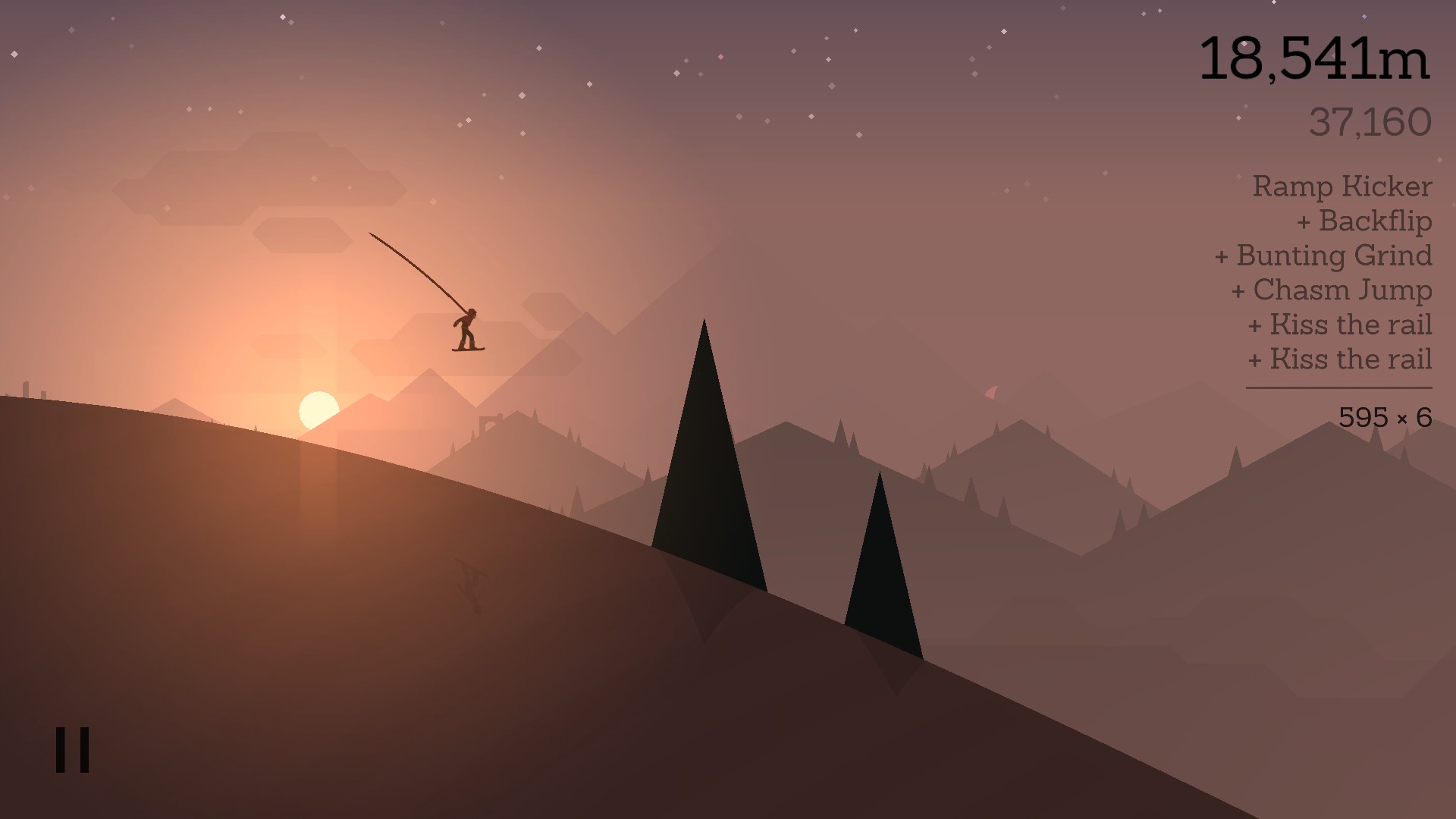
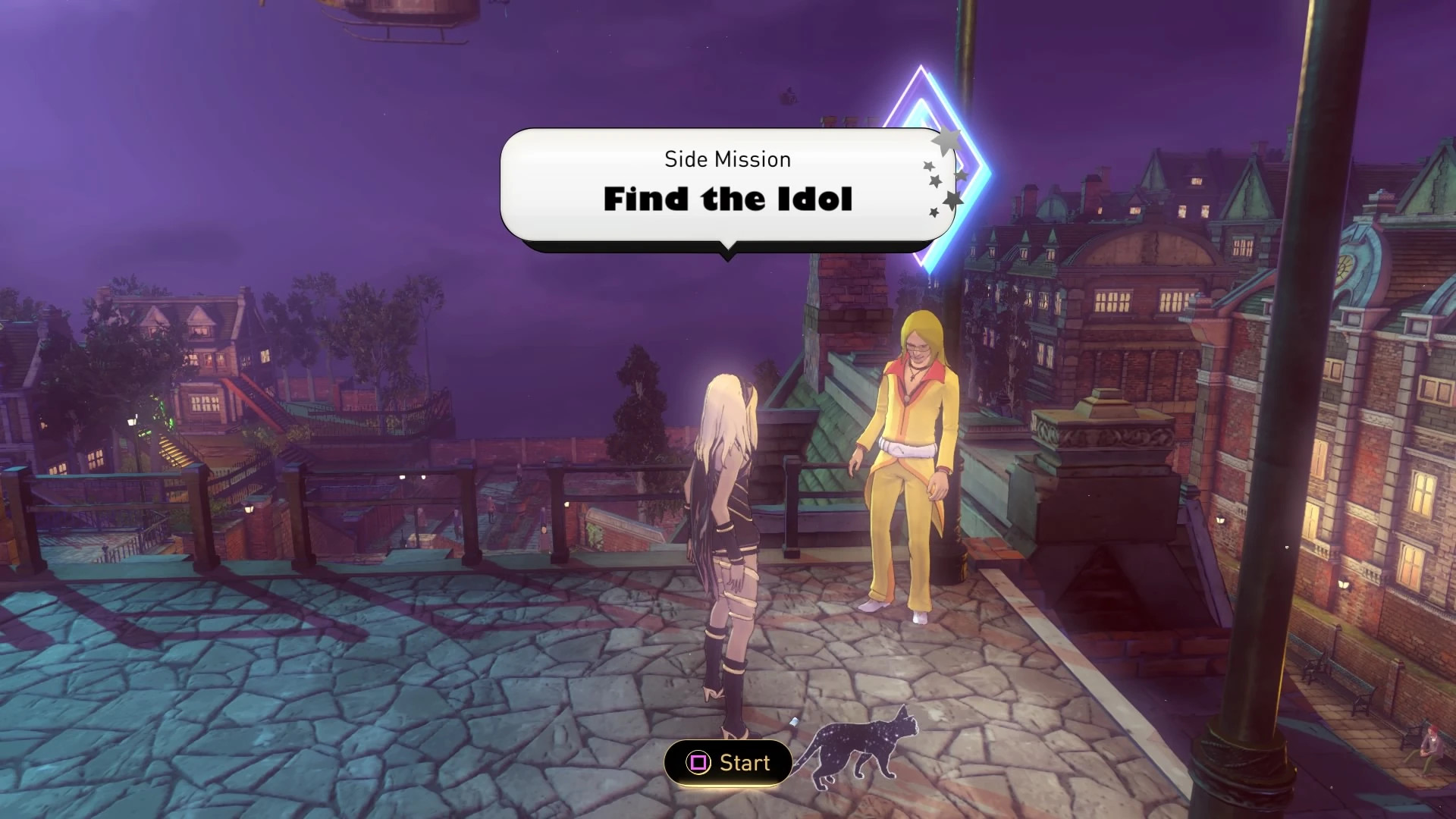
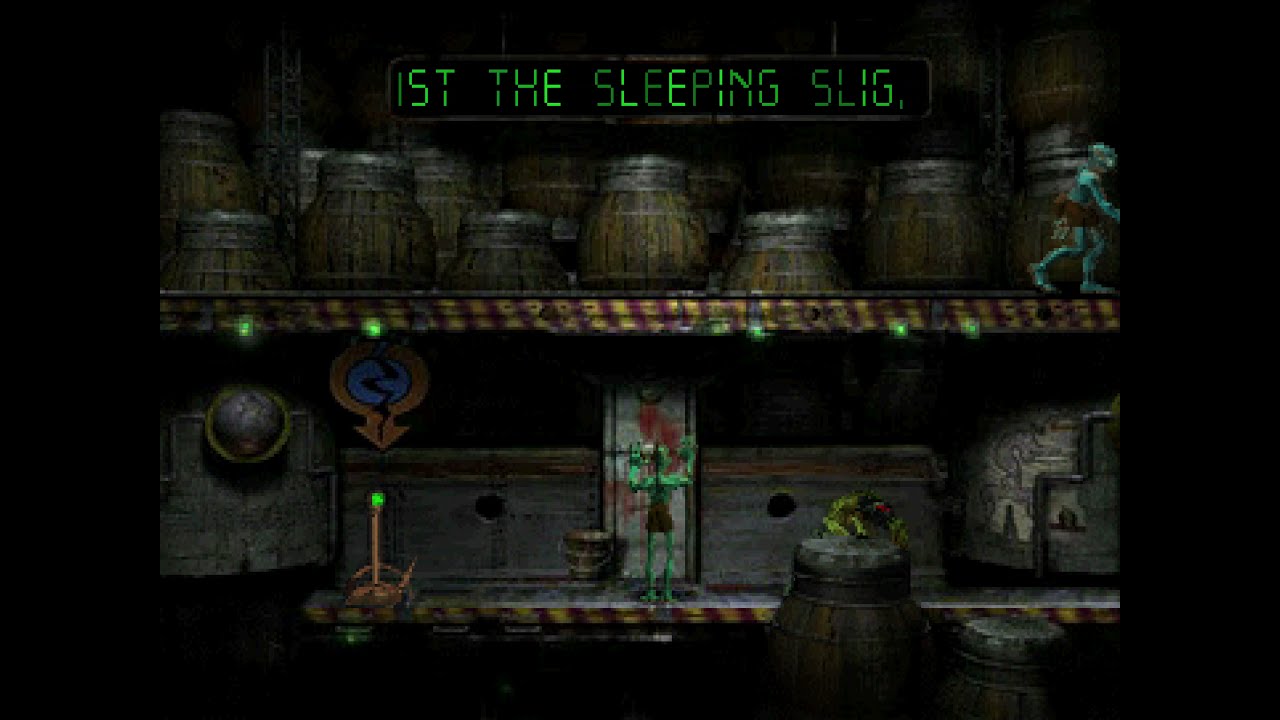
 Este es un espacio de trabajo personal de un/a estudiante de la Universitat Oberta de Catalunya. Cualquier contenido publicado en este espacio es responsabilidad de su autor/a.
Este es un espacio de trabajo personal de un/a estudiante de la Universitat Oberta de Catalunya. Cualquier contenido publicado en este espacio es responsabilidad de su autor/a.